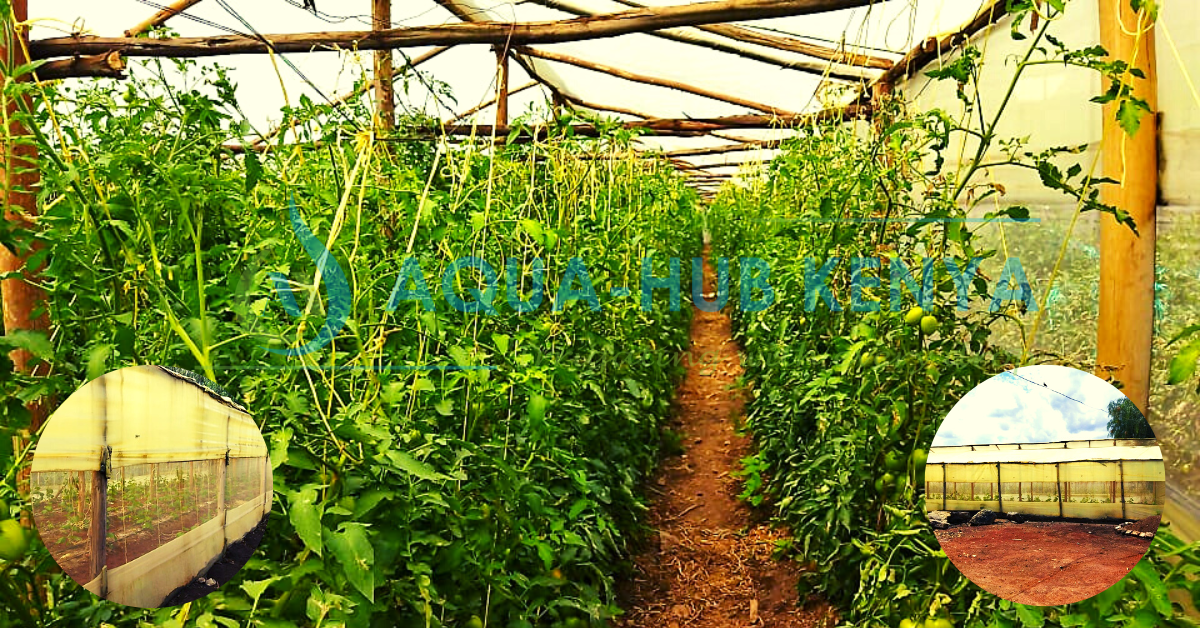As a greenhouse company in Kenya, we guide farmers on Greenhouse Tomato farming. First, we offer you the greatest greenhouse possible that will work well for your tomato cultivation. Then, we provide instructions for growing tomatoes in a greenhouse. We also provide training on the main strategies and top ways to boost greenhouse production. For all of our new farmers who are venturing into this commercially, we provide thorough guides. This applies to commercial greenhouse growers on both a small and large scale.
What is greenhouse tomato farming?
Growing tomatoes in a greenhouse is a terrific way to extend the season, whether because your location has a short growing season or because you want to get a second crop. In certain areas, the window of opportunity for growing tomatoes is limited, leaving people yearning for vine-ripened tomatoes. This is where the benefits of greenhouse-grown tomatoes shine. Growing tomatoes in a greenhouse can extend the season by many months, but that isn’t the only advantage. It also protects them from rain, which can promote fungal illness.
As a farmer, this is a fantastic opportunity, and with a greenhouse, you can be certain of much more. We have greenhouses of various sizes. The sizes of both wooden and metallic greenhouses range from 8 15 m to 8 24 m, and 8 30 m to 16 30 m. The cost of a greenhouse varies according to its size and type. Aqua Hub Kenya experts design one-of-a-kind constructions that are guaranteed to be stable for your greenhouse tomato farming. Our greenhouses feature great ventilation, which reduces disease risk and requires fewer chemicals overall.
How to Grow Tomatoes in a Greenhouse
- To begin, in order to produce fruit, the greenhouse temperature should be 60-65 F. (15-18 C.) at night and 70-80 F. (21-27 C.) during the day. Depending on your location, this may necessitate chilling the greenhouse during the day or warming at night.
- Air circulation is also necessary, which is provided by exhaust fans and optimum plant spacing. Circulation aids in maintaining a steady humidity level and decreases disease incidence.
- Plan on establishing a two-crop rotation to get the most tomatoes and really lengthen the growing season.
- Between pairs of tomato rows that are placed 28-30 inches (71-76 cm) apart, there is often 36 inches (91 cm) of work space.
- The stem of the transplant should be covered in wet soil and about half an inch (1.3 cm) above the previous soil line. Have a trellis structure in place before the plants reach a height of one foot. Typically, this entails fastening plastic rope from the plant to a support made of thick gauge wire that is hanging above the row.
What are the benefits of greenhouse tomato farming in Kenya?
Kenyan greenhouse tomato farming has significantly increased tomato output. The majority of Kenyan tomato growers cultivate popular greenhouse tomato cultivars like Anna F1 on a limited scale. In Kenya, growing tomatoes in greenhouses is a simple way to generate money. Growing plants in a greenhouse makes it simpler to put appropriate agronomic techniques into effect and lowers the cost of tomato production. The following advantages or benefits of greenhouse farming over open agricultural methods;
- Increased tomato yields as a result of favorable temperature conditions and the ability to plant more plants per square foot than in an open field.
- By using greenhouse farming, you may protect your horticultural crops from harmful weather, pests, and illnesses.
- When compared to open-field farming, greenhouse farming yields higher earnings. Utilizing hydroponics allows you to use resources more effectively while lowering waste.
- Instead of relying on seasonal output like open agriculture does, you can produce tomatoes all year round.
- By using sensors and data to monitor climatic conditions and technology to do simple menial duties, you can automate greenhouse production. As a result, you may decrease labor, expenses, and resources while increasing yields.
What is the cost of a greenhouse for tomato farming?
For growing tomatoes, there are many different types of greenhouses. They are available in a variety of forms, sizes, materials, and heating techniques. The kind of greenhouse, its size, and any additional services required all affect the cost of our greenhouses. Compared to metallic greenhouses, timber greenhouses are more expensive. Wooden greenhouses range in price from Ksh. 100,000 to Ksh. 300,000, but steel, metallic, and polycarbonate greenhouses can cost anywhere between Ksh. 150,000 and Ksh. 600,000, depending on their size and quality of construction.
Aqua Hub Kenya provides the best and most cost-effective Greenhouse at reasonable costs. We have both metallic and wooden greenhouses available. We also provide advice on the finest greenhouse procedures that farmers should follow. For further information, call NAIROBI at 0790719020 or ELDORET at 0759372241.




